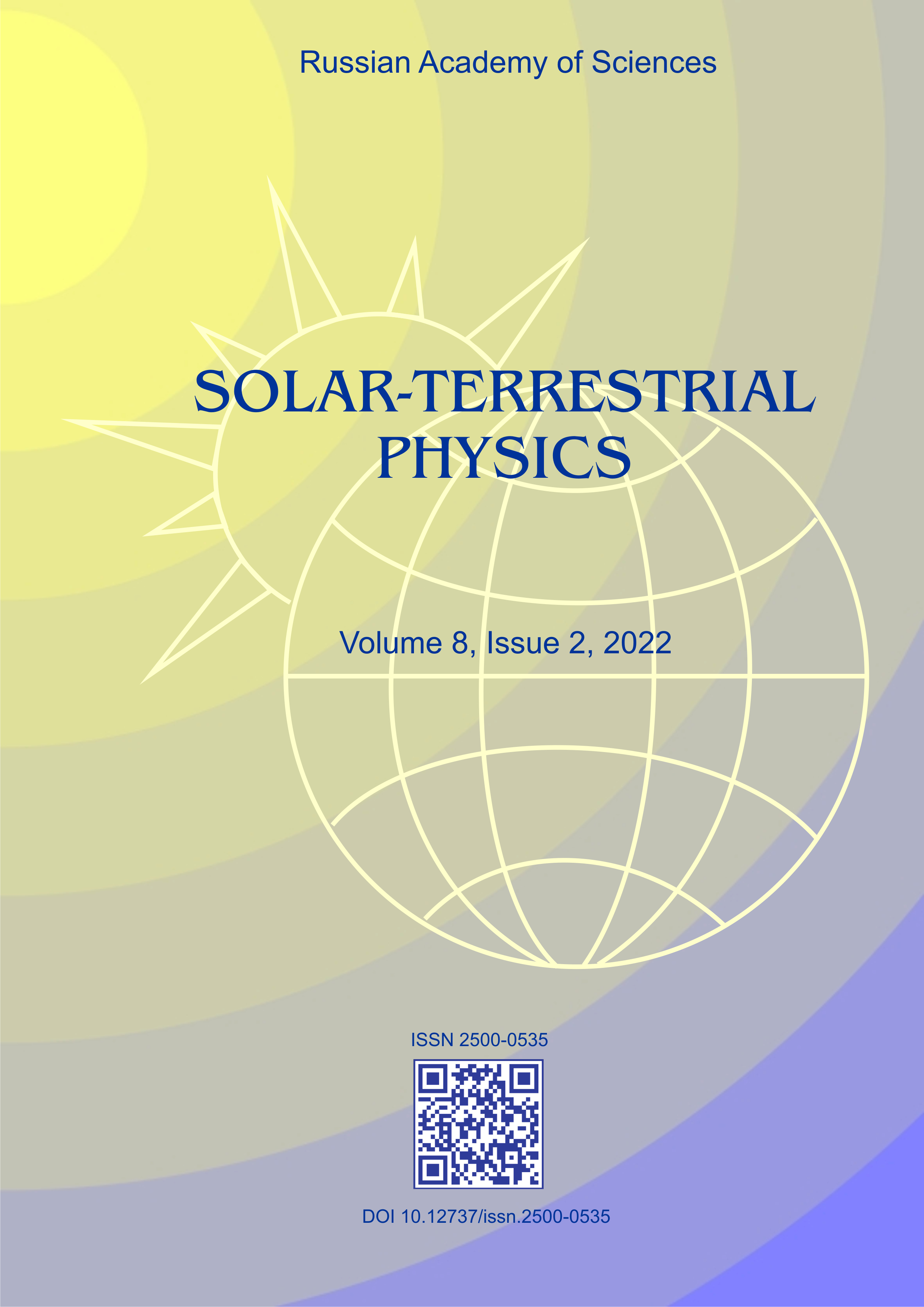Якутск, Россия
The impact of solar wind plasma on fluxes of galactic cosmic rays (CR) penetrating from the outside into the heliosphere with energies above ~1 GeV leads to temporal variations in the CR intensity in a wide frequency range. Cosmic rays being charged particles, their modulation occurs mainly under impacts of the interplanetary magnetic field. It is well known that the observed spectrum of interplanetary magnetic field (IMF) fluctuations in a wide frequency range ν from ~10–7 to ~10 Hz has a pronounced falling character and consists of three sections: energy, inertial, and dissipative. Each of them is described by the power law PIMF(ν)~ν–α, while the IMF spectrum index α increases with increasing frequency. The IMF fluctuations in each of these sections are also characterized by properties that depend on their nature. Also known are established links between fluctuation spectra of the interplanetary magnetic field and galactic cosmic rays in the case of modulation of the latter by Alfvén or fast magnetosonic waves. The theory predicts that fluctuation spectra of cosmic rays should also be described by the power law PCR(ν)~ν–γ. However, the results of many years of SHICRA SB RAS research into the nature and properties of cosmic ray intensity fluctuations based on data from neutron monitors at stations with different geomagnetic cut-offs RC from 0.5 to 6.3 GV show that the observed spectrum of fluctuations in galactic cosmic ray intensity in the frequency range above 10–4 Hz becomes flat, i.e. it is similar to white noise. This fact needs to be realized and explained. This paper reports the results of research into the shape of the spectrum of galactic cosmic ray intensity fluctuations within a frequency range ν from ~10–6 to ~1 Hz and compares them with model calculations of white noise spectra, using measurement data from the neutron monitor of the Apatity station. A possible physical explanation has been given for the observed shape of the cosmic ray fluctuation spectrum on the basis of the known mechanisms of their modulation in the heliosphere.
neutron monitor, cosmic rays, interplanetary magnetic field, modulation, power spectrum, white noise
1. Балабин Ю.В., Гвоздевский Б.Б., Германенко А.В. Большие и малые множественности на нейтронных мониторах: их различия. Изв. РАН. Сер. физ. 2015. Т. 79, № 5. С. 708-710. DOI:https://doi.org/10.7868/S0367676515050117.
2. Бережко Е.Г., Стародубцев С.А. Природа динамики спектра флуктуаций космических лучей. Изв. АН СССР. Сер. физ. 1988. Т. 52. С. 2361-2363.
3. Дженкинс Г., Ваттс Д. Спектральный анализ и его приложения. М.: Мир, 1971. Вып. 1. 317 с.
4. Коваленко В.А. Солнечный ветер. М.: Наука, 1983. 273 с.
5. Козлов В.И., Борисов Д.З., Туголуков Н.Н. Метод диагностики межпланетных возмущений по исследованию флуктуаций космических лучей и его реализация в системе автоматизации научных исследований на полярной геокосмофизической обсерватории Тикси. Изв. АН СССР. Сер. физ. 1984. Т. 48, № 10. С. 2228-2230.
6. Крымский Г.Ф. Диффузионный механизм суточной вариации космических лучей. Геомагнетизм и аэрономия. 1964. Т. 4, № 6. С. 977-985.
7. Крымский Г.Ф., Кузьмин А.И., Козлов В.И. и др. Явления в космических лучах в августе 1972 г. Изв. АН СССР. Сер. физ. 1973. Т. 37. С. 1205-1210.
8. Крымский Г.Ф., Кузьмин А.И., Кривошапкин П.А. и др. Космические лучи и солнечный ветер. Новосибирск: Наука, 1981. 224 с.
9. Отнес Р., Эноксон Л. Прикладной анализ временных рядов. Основные методы. М.: Мир, 1982. 430 с.
10. Тейлор Дж. Введение в теорию ошибок. М.: Мир, 1985. 272 с.
11. Balabin Yu.V., Gvozdevsky B.B., Vashenyuk E.V., Dzhappuev D.D. EAS hadronic component as registered by a neutron monitor. Astrophys. Space Sci. Trans. 2011. Vol. 7. P. 507-510. DOI:https://doi.org/10.5194/astra-7-507-2011.
12. Owens A.J. Cosmic-ray scintillations .2. General Theory of Interplanetary Scintillations. J. Geophys. Res. 1974. Vol. 79. P. 895-906.
13. Russell C.T. Comments on the measurement of power spectra of the interplanetary magnetic field / in Solar Wind, NASA-SP-308, Wash., D.C.: NASA. 1972. P. 365-374.
14. URL: https://cdaweb.gsfc.nasa.gov/cdaweb/sp_phys (дата обращения 8 февраля 2022 г.).
15. URL: http://www.srl.caltech.edu/ACE/ASC/level2/lvl2 DATA_MAG.html (дата обращения 8 февраля 2022 г.).
16. URL: https://cosmicrays.oulu.fi (дата обращения 8 февраля 2022 г.).
17. URL: http://pgia.ru/cosmicray (дата обращения 8 февраля 2022 г.).


















